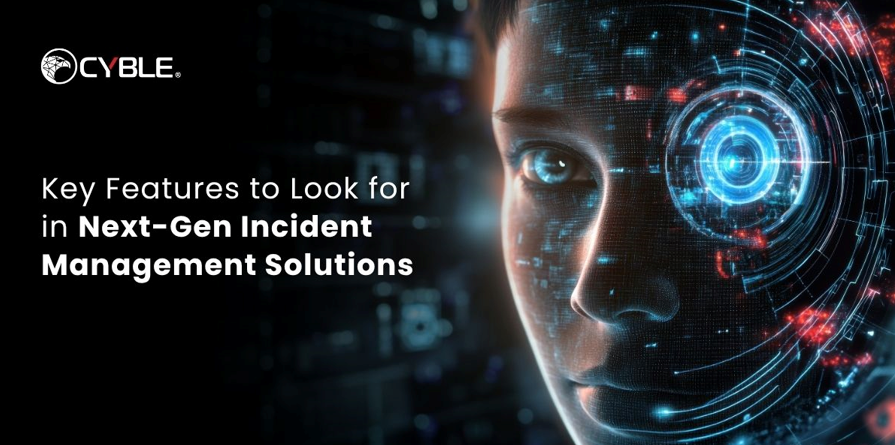A second passes and an incident occurs. Downtime, even loss of data, or more disruptions- all of which brsing quickly mounting financial and reputational damacne. Incident management, therefore, is an emerging topic of interest for every organization. Traditional systems typically bombarded teams with out-of-context alerts, thereby making it difficult to identify the real matters requiring urgent attention. This is precisely why next-generation incident management solutions exist-to help businesses handle incidents more rapidly and intelligently.
Why Is Incident Management Now More Relevant?
The digital world is already too complex to track manually. Imagine a large e-commerce business carrying out thousands of transactions every day. Every hour of system downtime is an hour filled with millions of lost revenue. An incident management solution prevents this from happening by providing for speedy detection and response.
Older tools would only log the incident but would never be fast or intelligent enough to do much else. In the present era, organizations want systems that do not just say what went wrong and when but also offer actionable insights in real time. This is why present-day incident response tools are moving in the direction of incorporating automation, analytics, and collaboration functionality.
What Defines Next-Gen Incident Management Solutions
Next-generation platforms do more than just tracking problems. They aggregate alerts to produce less noise and the ones they actually highlight are more important. For example, 100 low-priority warnings should not clog the dashboard, but instead, a next-gen solution groups them into one single actionable event to save time and keep teams focused.
These solutions also correspond to the ITSM incident management tool, ensuring a more seamless integration into existing IT workstreams. Instead of having security incidents treated on their own, these incidents enter into one process that both IT and security teams work on together.
Another trait is intelligence. Identification of AI has been applied today by several vendors in incident management solutions so that the systems can learn from past events. For example, when the system identifies recurring login anomalies from a particular location, it will automatically escalate the priority level and recommend a suggested response.
Key Features to Look For
While different organizations may have unique needs, some features stand out as essential in evaluating incident management solutions.
1. Advanced Incident Detection and Tracking
A strong incident tracking system for enterprises should not just log alerts but also correlate events across networks, applications, and endpoints. This gives teams a clear, single view of what’s happening.
Take a healthcare provider as an example. If their patient database faces unusual access attempts, the system should connect it with network spikes and endpoint anomalies, presenting one cohesive incident rather than scattered warnings.
2. Real-Time Collaboration
Security is a team sport. The best incident response platform features include integrated communication. This ensures security, IT, and compliance teams can coordinate quickly, share notes, and document actions without switching tools.
Imagine an airline facing a booking system outage. With real-time collaboration, IT can work on system recovery while the security team checks for cyber threats—all within the same platform.
3. Automation and AI
Manual response often leads to delays. AI in incident management solutions brings automation into play. For example, if malware is detected, the system can automatically isolate affected devices while alerting administrators. Automation reduces human error and speeds up recovery.
4. Integration with ITSM
Modern businesses rely heavily on IT service management. That’s why integration with ITSM incident management tools is critical. It ensures that every incident—whether IT-related or security-related—is logged, tracked, and resolved consistently.
5. Post-Incident Analysis
Recovery is just one step. Next-gen tools also provide reports and analytics to learn from each incident. This helps organizations refine policies, patch vulnerabilities, and prevent repeat occurrences.
Managing a plethora of alerts is no longer manageable. Solutions like Cyble Incident Management solve that problem. Cyble takes the mass of alerts and condenses them into manageable incidents that teams can act on. In short, this decreased noise increases efficiency, while allowing teams to act on real threats.
Cyble’s approach also focuses on collaboration, so IT and security can work together more easily. In turn, this means improving downtime and overall resilience. Although tools can’t prevent every incident, a system that improves response and increases visibility will help tremendously.
The Evolution Toward Smarter Response
The landscape of threats continues to expand. Organizations aren’t just dealing with viruses and phishing anymore—they’re handling ransomware, supply chain attacks, and insider threats. The pressure is high, and traditional approaches fall short.
That’s why investing in modern incident response tools is no longer optional. These tools not only accelerate response but also ensure businesses can maintain operations even under attack. A finance company, for example, can keep its payment system running while investigating suspicious activity in the background.
The shift is clear: next-gen incident management solutions aren’t just about fixing problems—they’re about building resilience.
Conclusion
Incidents happen. The only difference lies in how they are being prepared for and managed. Next-generation incident management solutions combine tracking, collaboration, automation, and AI so that an incident doesn’t go uncontrolled into a full-blown crisis.
You want to consider features like advanced tracking, real-time collaboration, ITSM integration, and powerful automation while choosing tools. They equip the response process while minimizing downtime.
The capacity to respond more clearly, quickly, and in a coordinated manner through solutions like Cyble’s Incident Management Module becomes not only a technology upgrade but a protection for operations, reputation, and trust.
In fast-paced digital settings, keeping ahead of incidents has ceased to be just an IT concern; it’s now a business concern. The right incident management solutions can make all the difference.

